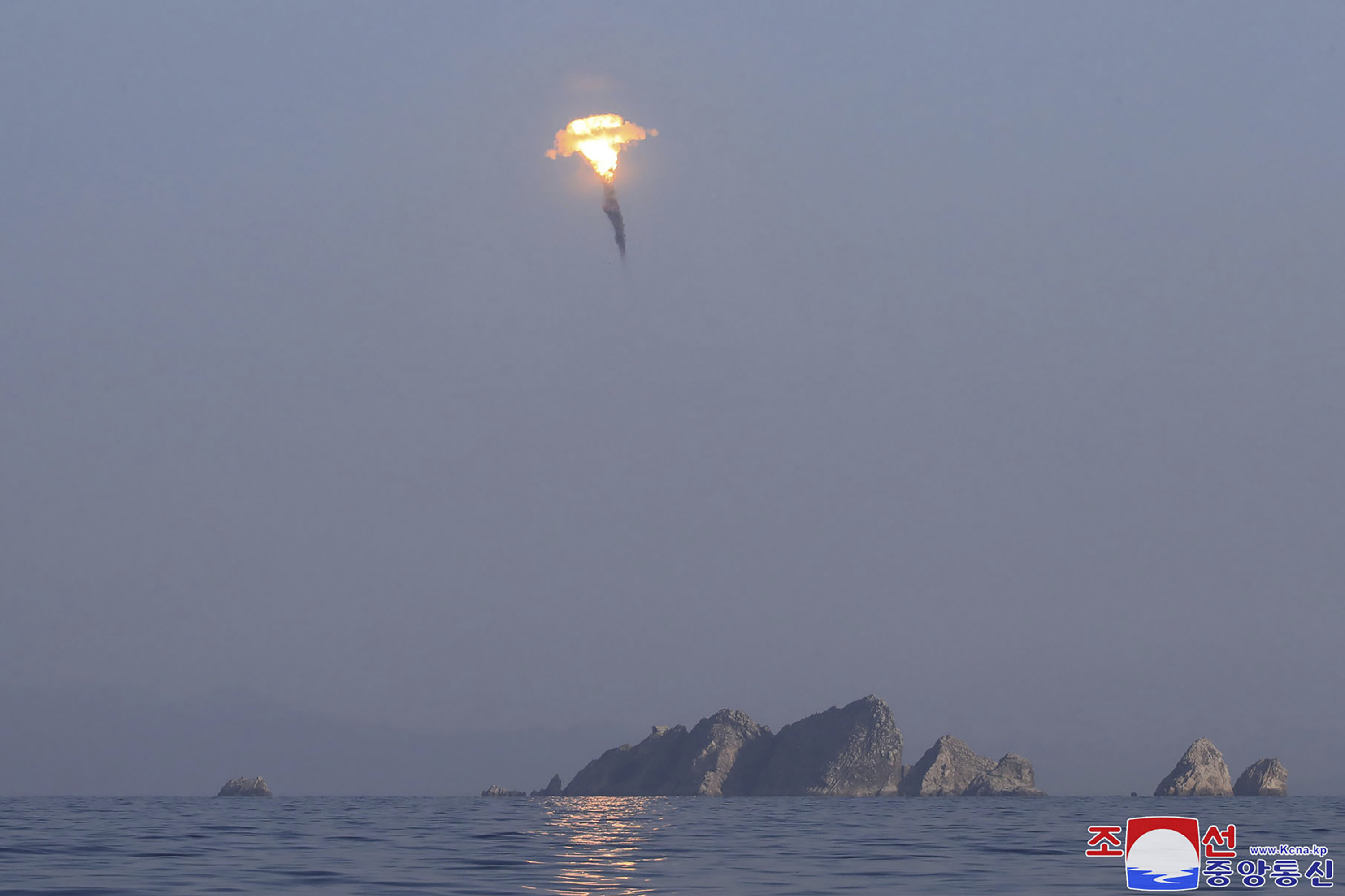Uncommon Knowledge
Newsweek is committed to challenging conventional wisdom and finding connections in the search for common ground.

North Korean weapons makers tested an advanced ballistic missile carrying a “super-large warhead” on Monday, its state media has said, after its southern neighbor assessed that one of the projectiles had failed and likely landed in an area near the capital Pyongyang.
The official Korean Central News Agency (KCNA) on Tuesday said Kim Jong Un‘s regime “successfully conducted” launches of a KN-23 tipped with a 4.5-ton mock warhead “to verify flight stability and hit accuracy” at ranges of 310 miles and 55 miles.
The KN-23, officially the Hwasong-11, is a tactical ballistic missile that has very likely seen use in Ukraine, according to debris analysis of weapons fired by Russia’s ground forces, raising the possibility that the demonstration hoped to facilitate more arms exports.
Shortly after the launch event a day earlier, South Korea‘s military said it tracked one ballistic missile from the North’s southwestern Jangyon area to the waters off Chongjin in the country’s northeast, about 370 miles away.
The second missile, however, flew “abnormally” and disappeared from radar after 75 miles, it said, with fragments likely falling in Pyongyang, 65 miles northeast of Jangyon.
South Korea’s Joint Chiefs of Staff said the North was likely trying to repeat a precision strike test it conducted in March 2023, when it launched KN-23 missiles from Jangyon and struck a target island off Chongjin.
The U.S. Indo-Pacific Command said the latest event posed “no immediate threat” to U.S. personnel, territory, and those of its allies.
A nuclear-capable, super-large warhead is on Kim’s wish list of sophisticated weaponry first articulated at a Workers’ Party gathering in 2021, alongside submarine-launched nuclear missiles, reconnaissance satellites and multi-warhead missiles.
The KCNA said this week’s test was “of great significance” to the party, but it and other state news outlets did not publish photographs of the event or indicate where the test took place.
Pyongyang’s missile scientists will test-fire KN-23s carrying 4.5-tons warheads again this month, the KCNA said, “to verify flight characteristics, hit accuracy and explosion power of [a] super-large warhead” at a range of 155 miles.
North Korea’s second missile test in five days came after the United States, Japan and South Korea concluded their trilateral Freedom Edge exercises in the East China Sea.
It was a pointed warning to Kim and his allies, and Pyongyang vowed to respond, in a deepening of inter-Korean tensions on the peninsula.
Last week, South Korea accused its neighbor of covering up failure after the North claimed it had successfully tested a potentially game-changing, multi-warhead ballistic missile. Seoul later released footage of the projectile blowing up in midair.
North Korea’s embassy in Beijing did not respond to multiple requests seeking comment before publication.
Newsweek is committed to challenging conventional wisdom and finding connections in the search for common ground.
Newsweek is committed to challenging conventional wisdom and finding connections in the search for common ground.